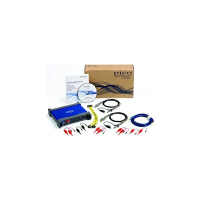
Do you have a question about the PICO Optoma EP-PK-101 and is the answer not in the manual?
Component for accessing the battery.
Controls for powering the projector on and off.
Light indicating the projector's operational status.
Connection point for powering the projector via USB.
The optical element that projects the image.
Control to sharpen the projected image.
Built-in audio output component.
Port for connecting audio-visual input sources.
Threaded hole for attaching tripod accessories.
Opening for securing a carrying strap.
Device for supplying electrical power.
Rechargeable power cells included with the projector.
Component for mounting the projector on a tripod.
Cable for power or data connection.
Optional cable for audio input with volume adjustment.
Cable for connecting video and audio sources.
Step to access the battery compartment.
Proper orientation for battery installation.
Closing the battery compartment after insertion.
Procedure to plug in the power adapter.
Red LED indicates charging is in progress.
Warning that charging is not possible during use.
LED turns off when the battery is fully charged.
How to connect standard audio/video sources.
How to connect iPod, iPhone, etc.
Note on needing an adapter for Apple devices.
Procedure to activate the device using the switch.
How to set the speaker volume level.
Settings for Bright and STD (economy) modes.
Securing the adapter to the projector's screw hole.
Mounting the projector onto the attached tripod.
How to sharpen the image using the focus dial.
Chart for screen size based on projection distance.
Guidelines on placement, ventilation, heat, and light.
Warnings against exposure to liquids and moisture.
Instructions for battery handling, charging, and disposal.
Advice on cleaning, damage, and authorized repair.
Crucial warning to protect eyes from the projector beam.
Guidance for using the projector with students.
Recommendations for reducing ambient light for better projection.
Details regarding compliance with US Federal Communications Commission rules.
Mandate for using shielded cables for external connections.
Warning against unauthorized changes to the device.
Specifies the conditions under which the device complies with regulations.
Statements for compliance with Canadian and European Union standards.